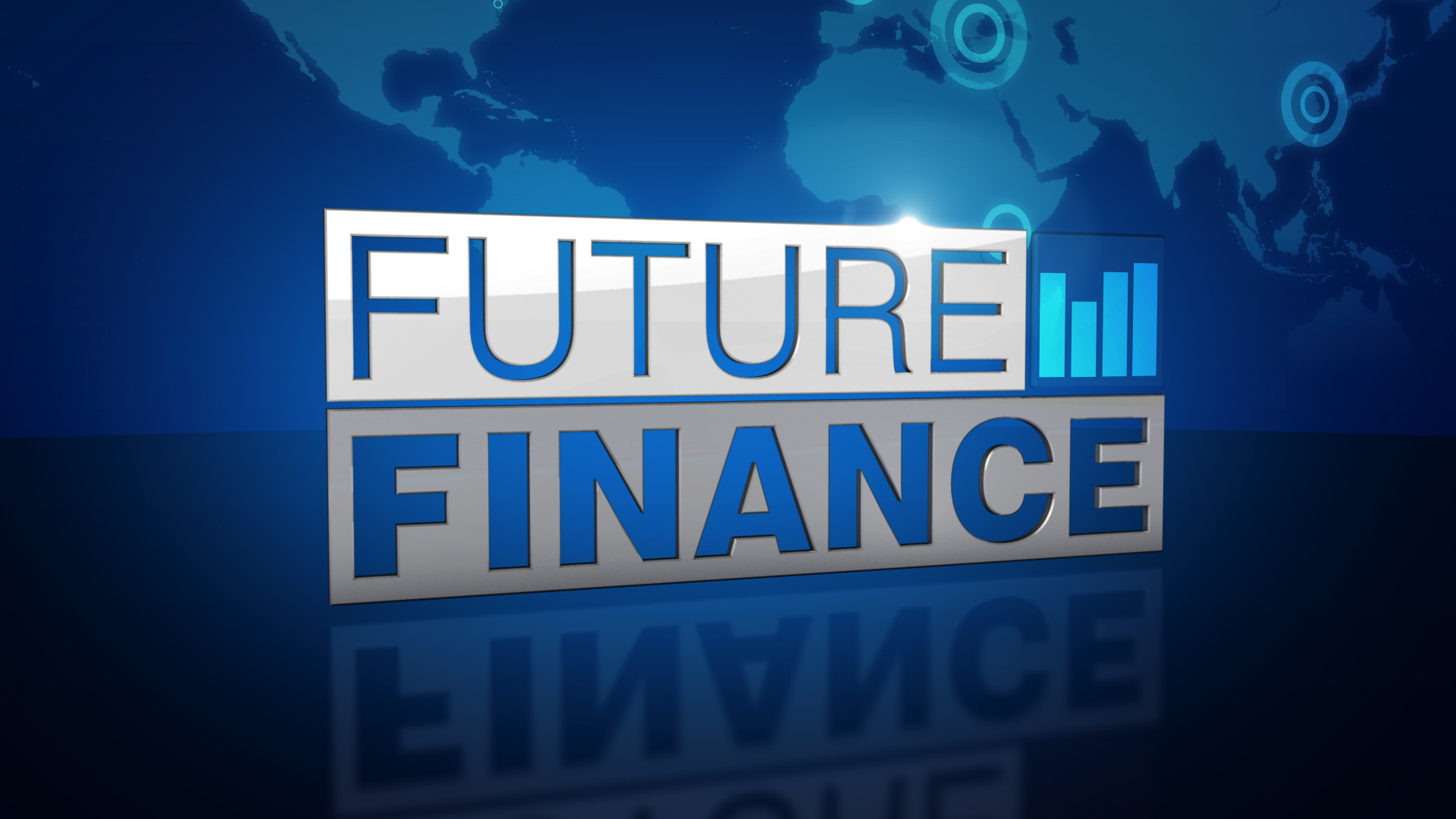
The Finance Industry has undergone significant changes over the past decade, driven by technological advancements, regulatory shifts, and evolving consumer expectations. As we move further into 2024, innovations such as artificial intelligence (AI), blockchain, and decentralized finance (DeFi) are redefining the way individuals and businesses interact with money. This article explores these groundbreaking changes, their implications, and how they are shaping the future of finance.
Table of Contents
The Rise of Digital Banking and Fintech
In the past decade, the Finance Industry has witnessed a revolution. Digital banking and fintech have emerged as powerful forces, reshaping how we manage money, make payments, and access financial services. From mobile banking apps to blockchain-powered solutions, these innovations are not just changing the industry they’re changing lives. This article delves into the rise of digital banking and fintech, their impact on society, and what the future holds for this rapidly evolving sector.
Read More: What Are The Benefits Of .xyz Domain?
1. The Digital Banking Boom: Convenience at Your Fingertips
Gone are the days of waiting in long queues at brick-and-mortar banks. Digital banking has brought financial services to our smartphones, making banking faster, easier, and more accessible. Key drivers of this transformation include:
- Mobile-first banking apps: Apps like Revolut, Chime, and N26 offer seamless account management, instant transfers, and budgeting tools.
- 24/7 accessibility: Customers can check balances, pay bills, and apply for loans anytime, anywhere.
- Lower fees: Digital banks often have lower overhead costs, passing savings to customers.
According to a 2024 Statista report, over 65% of global banking customers now prefer digital channels for their financial needs. This shift is particularly pronounced among millennials and Gen Z, who value speed and convenience.
2. Fintech: The Engine of Financial Innovation
Fintech, or financial technology, has become the backbone of modern finance. By leveraging cutting-edge technologies like AI, blockchain, and big data, fintech companies are solving age-old problems in new ways. Here’s how:
- Payments: Platforms like PayPal, Stripe, and Square have revolutionized how we send and receive money.
- Lending: Peer-to-peer lending platforms such as LendingClub and Funding Circle offer faster, more flexible loan options.
- Investing: Robo-advisors like Betterment and Wealthfront make investing accessible to the masses.
In 2023, global fintech investments reached $210 billion (KPMG), underscoring the sector’s growth and potential. From small startups to established giants, fintech is driving financial inclusion and efficiency.
3. Financial Inclusion: Bridging the Gap
One of the most significant impacts of digital banking and fintech is their ability to bring financial services to underserved populations. In developing countries, mobile money platforms like M-Pesa have transformed economies:
- Kenya: M-Pesa has banked over 80% of the adult population, enabling small businesses to thrive.
- India: UPI (Unified Payments Interface) processed over 10 billion transactions monthly in 2024.
- Latin America: Digital wallets like Mercado Pago are empowering unbanked communities.
However, challenges remain. A 2024 World Bank study found that 1.4 billion adults still lack access to formal financial services, highlighting the need for continued innovation.
4. The Role of AI and Big Data
Artificial intelligence and big data are at the heart of the fintech revolution. These technologies enable:
- Personalized services: AI analyzes spending patterns to offer tailored financial advice.
- Fraud detection: Machine learning algorithms identify suspicious transactions in real-time.
- Credit scoring: Alternative data sources (e.g., utility payments) help assess creditworthiness for those without traditional credit histories.
For example, Ant Group’s Sesame Credit uses AI to evaluate over 3,000 data points per user, expanding credit access to millions in China.
5. Blockchain and Cryptocurrencies: The Future of Finance?
Blockchain technology and cryptocurrencies are reshaping the financial landscape. Key developments include:
- Decentralized finance (DeFi): Platforms like Aave and Uniswap enable peer-to-peer lending and trading without intermediaries.
- Central bank digital currencies (CBDCs): Over 130 countries are exploring CBDCs, with China’s digital yuan leading the way.
- Smart contracts: Self-executing contracts on blockchain reduce costs and increase transparency.
Despite their potential, cryptocurrencies face regulatory hurdles and volatility. In 2024, Bitcoin’s price swings ranged from $20,000 to $50,000, illustrating the risks involved.
6. Challenges and Risks in the Digital Era
While digital banking and fintech offer immense benefits, they also come with challenges:
- Cybersecurity threats: Data breaches and phishing attacks are on the rise.
- Regulatory uncertainty: Governments struggle to keep pace with rapid innovation.
- Digital divide: Rural and elderly populations often lack access to digital tools.
A 2024 Deloitte report found that 60% of consumers worry about data privacy in digital banking, emphasizing the need for robust security measures.
7. The Future of Digital Banking and Fintech
The future looks bright for digital banking and fintech. Emerging trends include:
- Embedded finance: Financial services integrated into non-financial platforms (e.g., buy-now-pay-later options in e-commerce).
- Open banking: APIs enabling third-party developers to build financial apps.
- Green fintech: Solutions promoting sustainable finance, such as carbon footprint tracking.
By 2030, experts predict that 90% of financial transactions will be digital, marking a new era of convenience and innovation.
Blockchain and Cryptocurrency: More Than Just Bitcoin
Blockchain technology and cryptocurrencies have matured beyond speculative trading, finding real-world applications in various financial sectors. Governments and financial institutions are exploring central bank digital currencies (CBDCs) to modernize monetary systems, while businesses adopt blockchain for secure transactions and smart contracts.
1. Decentralized Finance (DeFi): The New Financial Ecosystem
Decentralized finance, or DeFi, is revolutionizing traditional financial systems by eliminating intermediaries like banks and brokers. Built on blockchain technology, DeFi platforms enable peer-to-peer lending, borrowing, and trading. Key innovations include:
- Smart contracts: Self-executing contracts that automate transactions without human intervention.
- Yield farming: Users earn interest by lending their crypto assets.
- Stablecoins: Cryptocurrencies pegged to stable assets like the US dollar to reduce volatility.
In 2024, the total value locked (TVL) in DeFi protocols surpassed $150 billion (DeFi Llama), demonstrating its growing popularity. However, risks like smart contract vulnerabilities and regulatory scrutiny remain.
2. Central Bank Digital Currencies (CBDCs): Bridging Tradition and Innovation
Governments worldwide are exploring central bank digital currencies (CBDCs) as a way to modernize monetary systems. Unlike decentralized cryptocurrencies, CBDCs are issued and regulated by central banks. Key developments include:
- China’s digital yuan: Piloted in 2023, it’s now used by over 300 million people.
- Europe’s digital euro: Expected to launch by 2025, aiming to enhance cross-border payments.
- Nigeria’s eNaira: The first African CBDC, designed to boost financial inclusion.
CBDCs promise faster transactions and reduced costs but raise concerns about privacy and centralization.
3. NFTs: Beyond Digital Art
Non-fungible tokens (NFTs) have evolved from being a trend in digital art to a versatile tool with real-world applications. Innovations in the NFT space include:
- Tokenized real estate: Properties are divided into NFTs, enabling fractional ownership.
- Gaming: Players own in-game assets as NFTs, which can be traded or sold.
- Identity verification: NFTs are used to store and verify personal credentials securely.
Despite a market correction in 2023, the NFT industry is projected to grow to $80 billion by 2025 (Grand View Research), driven by utility-focused projects.
4. Layer 2 Solutions: Scaling Blockchain for Mass Adoption
As blockchain networks like Ethereum face scalability issues, Layer 2 solutions are emerging to address these challenges. These technologies operate on top of existing blockchains to improve speed and reduce costs. Popular solutions include:
- Rollups: Bundling multiple transactions into a single one to reduce fees.
- Sidechains: Independent blockchains that interact with the main chain.
- State channels: Off-chain transactions that settle on the blockchain later.
For example, Polygon, a Layer 2 solution, has reduced Ethereum transaction costs by up to 90%, making blockchain more accessible to everyday users.
5. AI and Blockchain: A Powerful Combination
Artificial intelligence (AI) is enhancing blockchain technology in several ways:
- Fraud detection: AI algorithms analyze blockchain transactions to identify suspicious activity.
- Smart contract optimization: AI improves the efficiency and accuracy of smart contracts.
- Data analysis: AI processes vast amounts of blockchain data to provide actionable insights.
In 2024, AI-powered blockchain platforms like Fetch.ai gained traction, offering decentralized machine learning services.
6. Sustainability in Blockchain: Green Solutions
The environmental impact of blockchain, particularly proof-of-work (PoW) cryptocurrencies like Bitcoin, has drawn criticism. Innovations addressing sustainability include:
- Proof-of-stake (PoS): Ethereum’s transition to PoS reduced its energy consumption by 99.95%.
- Carbon credits on blockchain: Platforms like Toucan tokenize carbon credits to promote transparency.
- Renewable energy mining: Mining operations powered by solar and wind energy are on the rise.
These efforts are crucial as the industry seeks to balance growth with environmental responsibility.
7. Regulatory Challenges and Opportunities
As blockchain and cryptocurrencies gain mainstream adoption, regulators are stepping in to ensure security and fairness. Key developments include:
- MiCA regulation in the EU: A comprehensive framework for crypto assets, set to take effect in 2024.
- U.S. SEC actions: Increased scrutiny of crypto exchanges and ICOs.
- Global cooperation: The G20’s push for standardized crypto regulations.
While regulation brings legitimacy, it also poses challenges for innovation and decentralization.
8. Real-World Impact: Transforming Industries
Blockchain and cryptocurrencies are not just theoretical concepts—they’re transforming industries:
- Supply chain: Blockchain ensures transparency and traceability in global supply chains.
- Healthcare: Patient records stored on blockchain improve data security and accessibility.
- Gaming: Play-to-earn games like Axie Infinity create new income streams for players.
These applications demonstrate the tangible benefits of blockchain technology beyond finance.
Major Trends in Blockchain Finance
- Decentralized Finance (DeFi): A system of Finance Industry applications built on blockchain, eliminating intermediaries and allowing for peer-to-peer lending, borrowing, and trading.
- Stablecoins: Cryptocurrencies pegged to stable assets like the US dollar, reducing volatility while enabling borderless transactions.
- Tokenization of Assets: The digital representation of real-world assets (e.g., real estate, stocks) on blockchain, enhancing liquidity and accessibility.
AI and Machine Learning in Finance Industry
Artificial intelligence is revolutionizing Finance Industry services by improving risk assessment, fraud detection, and customer experience. Banks and investment firms increasingly rely on AI-powered algorithms for real-time decision-making and automated financial planning.
AI-Driven Innovations
- Fraud Detection: AI analyzes transaction patterns to identify suspicious activities and prevent cyber fraud.
- Personalized Banking: Machine learning models offer tailored financial insights based on users’ spending habits.
- Algorithmic Trading: AI-driven trading strategies that execute high-frequency trades with precision and speed.
The Growing Importance of ESG Investing
Environmental, Social, and Governance (ESG) Finance Industry investing has gained traction as investors prioritize sustainability and ethical business practices. Financial institutions are integrating ESG factors into their investment strategies, promoting a shift toward responsible finance.
ESG Investment Trends
- Green Bonds: Fixed-income securities designed to fund environmentally friendly projects.
- Impact Investing: Investments aimed at generating both financial returns and positive social outcomes.
- Regulatory Support: Governments and regulators encouraging transparency and sustainability reporting.
Navigating the Challenges and Risks in the Evolving Financial Landscape
The Finance Industry world is undergoing a seismic transformation. From the rise of decentralized finance (DeFi) to the integration of artificial intelligence (AI) in banking, innovation is reshaping how we save, invest, and transact. Yet, as the industry evolves, so do its challenges and risks. This article explores the pressing issues in today’s financial ecosystem, their real-world implications, and how individuals and institutions can adapt to thrive in this dynamic environment.
1. Cybersecurity Threats: The Digital Battlefield
As financial services migrate online, cyberattacks have surged. In 2023 alone, global losses from crypto hacks exceeded $1.7 billion (Chainalysis), while traditional banks faced a 45% increase in ransomware attempts. Key vulnerabilities include:
- Phishing scams targeting mobile banking users
- API breaches in fintech platforms
- AI-powered deepfake fraud in voice and video verification systems
A 2024 McKinsey report revealed that 68% of consumers hesitate to adopt new financial apps due to security fears. Institutions now invest heavily in quantum-resistant encryption and behavioral biometrics, but the arms race continues.
2. Regulatory Whiplash in a Borderless Economy
Governments struggle to keep pace with innovations like stablecoins and AI-driven trading. The EU’s Markets in Crypto-Assets (MiCA) regulation clashes with Asia’s more lenient frameworks, creating compliance chaos for global firms. Recent developments include:
- U.S. SEC lawsuits against major crypto exchanges (2023-2024)
- China’s digital yuan rollout complicating cross-border trade
- Debates over “embedded finance” liability in e-commerce platforms
For everyday users, this uncertainty means shifting rules about crypto taxes, account freezes, and unexpected fees during international remittances.
3. Cryptocurrency Volatility: Beyond the Hype Cycle
Despite Bitcoin’s 2024 rebound, the crypto market remains a rollercoaster. TerraUSD’s 2022 collapse erased $40 billion in wealth overnight, while NFT valuations dropped 95% from their peak. Mainstream adoption faces three hurdles:
- Speculative trading culture fueled by social media
- Liquidity risks in smaller exchanges
- Environmental backlash against proof-of-work coins
Retail investors often overlook these risks. A FINRA survey found 78% of crypto traders couldn’t explain blockchain basics, highlighting the education gap.
4. The Financial Inclusion Paradox
While mobile money has banked 1.2 billion unserved adults (World Bank), new divides emerge. Rural communities face:
- Poor digital literacy among older populations
- Algorithmic bias denying microloans
- High data costs for financial apps
In Southeast Asia, 43% of gig workers report unstable income due to platform-driven payment delays—a stark reminder that technology alone can’t solve systemic inequality.
5. Sustainability vs. Profitability: The Green Finance Dilemma
ESG (Environmental, Social, Governance) investing ballooned to $41 trillion in assets by 2024. However, challenges persist:
| Issue | Impact |
| Greenwashing lawsuits | BlackRock fined $2.5M (2023) for misleading ESG claims |
| Carbon credit fraud | 70% of offsets fail to reduce emissions (Science) |
| Renewables funding gaps | Developing nations receive <20% of climate finance |
Individual investors increasingly demand transparency, with 61% willing to accept lower returns for genuine sustainability (Morgan Stanley).
6. AI Ethics: When Algorithms Control Wealth
AI manages over $8 trillion in assets globally but raises critical questions:
- Bias: Mortgage approval rates drop 15% for minorities in AI-processed applications (Brookings)
- Opacity: 90% of robo-advisors don’t explain strategy shifts to users
- Job loss: 300,000 banking jobs at risk from automation by 2026 (WEF)
Regulators now push for “explainable AI” mandates, but implementation lags behind innovation.
Conclusion: Building Resilience in Uncertain Times
The evolving financial landscape offers unprecedented opportunities—from instant global payments to personalized wealth management. Yet, as we’ve explored, each innovation carries inherent risks. Success in this new era demands:
- Continuous learning to navigate complex tools
- Diversification across assets and platforms
- Advocacy for ethical tech development
By staying informed and proactive, both individuals and institutions can turn these challenges into catalysts for a more inclusive and stable financial future.











:max_bytes(150000):strip_icc()/Term-Definitions_Digital-Marketing-5ae6ea1aee934b02a94a1a4d9401443d.jpg)




